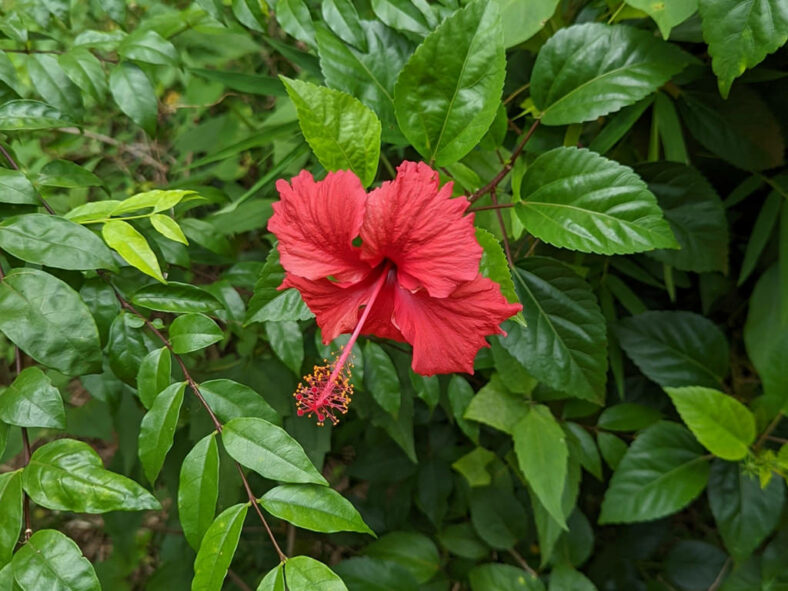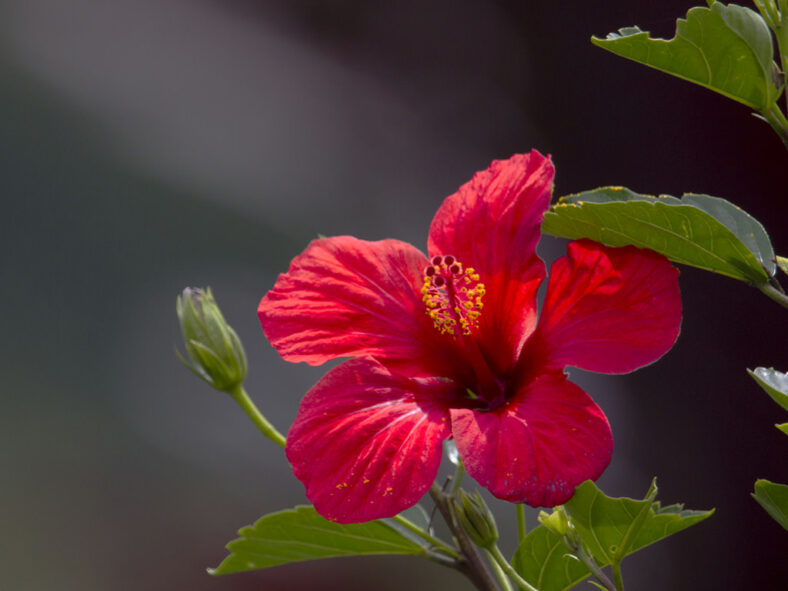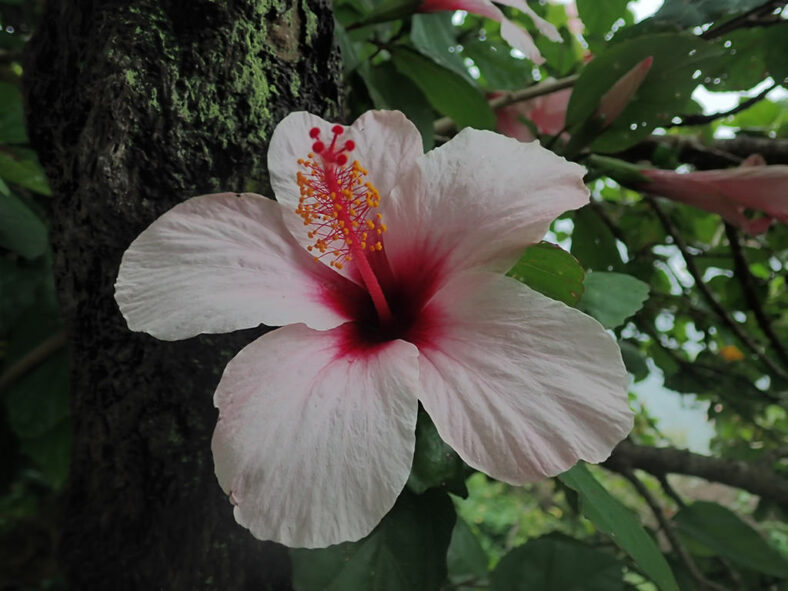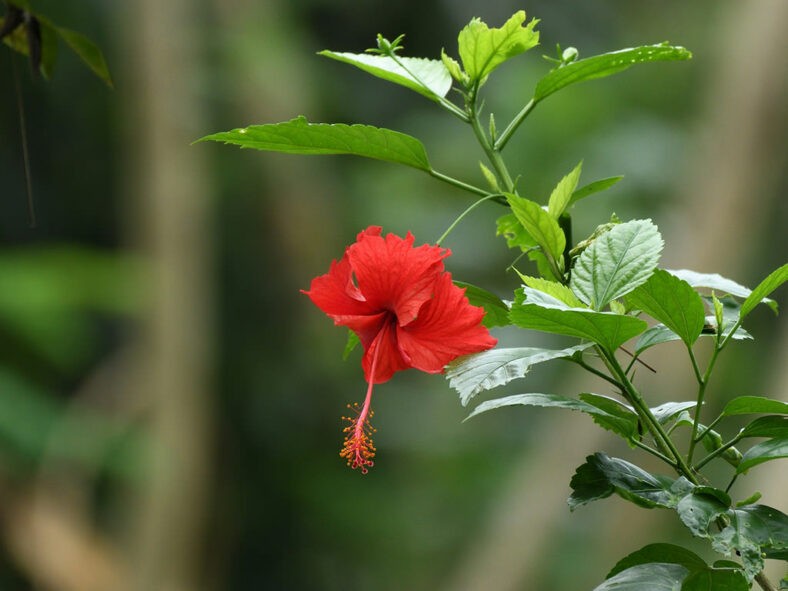Scientific Name
Hibiscus rosa-sinensis L.
Common Name(s)
China Rose, Chinese Hibiscus, Hawaiian Hibiscus, Rose Mallow, Rose of China, Shoe Flower, Tropical Hibiscus
Synonym(s)
Hibiscus arnottii, Hibiscus liliiflorus, Hibiscus rosa-sinensis subsp. rosa-sinensis
Scientific Classification
Family: Malvaceae
Tribe: Hibisceae
Genus: Hibiscus
Origin
Hibiscus rosa-sinensis is native to eastern Asia.
Flower
Color: Red to dark red
Bloom Time: Summer and fall
Description
Hibiscus rosa-sinensis is an evergreen shrub or small tree that can grow up to 16 feet (5 m) tall and up to 10 feet (3 m) wide. The leaves are dark green, broadly or narrowly ovate, irregularly and coarsely toothed at the margins, and arranged alternately on the branches. The leaves can measure up to 4.8 inches (12 cm) long and 3.4 inches (8.5 cm) wide.
The showy flowers are usually red, sometimes pink, white, or yellow, and usually darker at the base. They are 5-petaled, funnelform to rotate or with petals slightly reflexed, and can reach up to 4 inches (10 cm) in diameter. The fruits are ovoid brown capsules that contain up to 3 seeds.

Hardiness
USDA hardiness zone 9a to 11b: from 20 °F (−6.7 °C) to 50 °F (+10 °C).
How to Grow and Care
Hibiscus should be moved outside in the summer and back inside in winter. Tips for a successful transition include: Trim the plant hard before moving it inside for the winter. It will go into near dormancy until late winter; After you trim it, treat it thoroughly for insects before bringing it in. Neem oil and liquid detergent work well or use a hose to blast off insects. Once inside, don't overwater; provide as much humidity as possible, including daily mistings. Don't expose it to blowing air from vents. When the weather warms above 50ºF (10ºC) at night, move it back outside and acclimate slowly.
Repot as necessary, yearly, or biannually. Hibiscus will grow into trees in their native habitats, but this may be unwieldy in a home setting. There's also some benefit to keeping the Hibiscus in a relatively smaller pot, as it will make for easier pruning and moving. Failure to repot these plants often can leave them in soil without adequate nutrients for their survival, and repotting will often spur growth if you're finding that your Hibiscus plants seem to have stalled out. Watch out for falling leaves or other signs of stress.
See more at How to Grow and Care for Hibiscus.
Links
- Back to genus Hibiscus
- Plantpedia: Browse flowering plants by Scientific Name, Common Name, Genus, Family, USDA Hardiness Zone, or Origin
Photo Gallery
Click on a photo to see a larger version.




